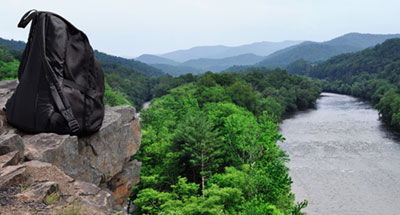8 Video Games That Inspire Me to Travel
Video games and travel may not inherently have a lot in common, but there have been more than several times that digital and online adventures have left me wanting for the real world equivalent. Games exploit man's innate curiosity, and the role-playing variety especially excels at this. My typical RPG gameplay goes something like: arrive in new town, check the shops, eavesdrop on townspeople, investigate every point of interest, leave town, explore the field until HP are exhausted, return to town to sleep and recover, repeat. If I swapped "RPG gameplay" for "travel style", that sentence would still be quite accurate. And to top it all off, our real world also needs heroes to save it...from ourselves. Plot twist!
The following are just a handful of games in which I found myself daydreaming of traveling.
8. Journey
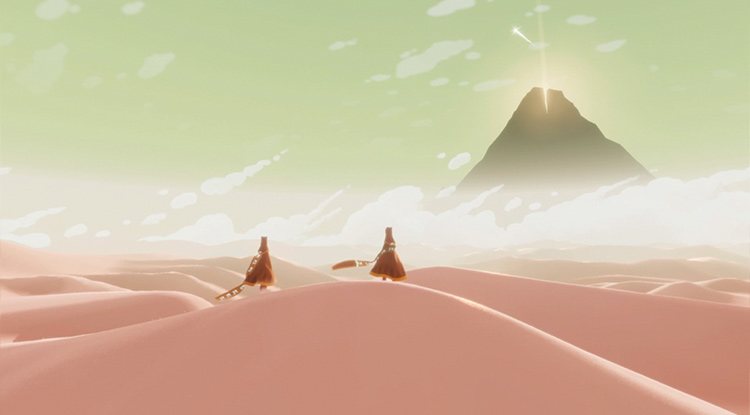
Journey won't score many points for realism, but its strong themes of exploration and minimalism along with the creative use of simplistic but artful visuals to capture the uncomplicated beauty of endless desert sand certainly invokes a sense of wonder and curiosity. The ability to discover and cooperate with other players along the way with no more than a musical chime for communication, not even knowing so much as their name until after the credits roll, reminds me of how language barriers encountered when traveling can be both frustrating and humanizing. Often that lack of ability to communicate with a person is precisely what makes them easier to get along with, as any potentially disagreeable information about them is stripped away, leaving only the agreeableness of smiles, laughter, and body language. Maybe the world would be a better place if we all communicated in chimes.
7. Guild Wars 2

The incredible work of the art team behind the Guild Wars series has been featured in fine art exhibitions and framed for office walls, and although most of the detail and refinement is unfortunately lost when translated to a game world, a romp through the vast wildernesses and tundras of Guild Wars 2 still captures the excitement of a huge and diverse world to explore. Fields of golden wheat, flowering elven forests, kelp-lined sub-aquatic tunnels, frozen lakes, and glistening snow falling off weighted pine branches; there's great variety in the environments. I never got into the game long-term, but I still logged more than a hundred hours of exploration before putting it down.
6. Elder Scrolls series
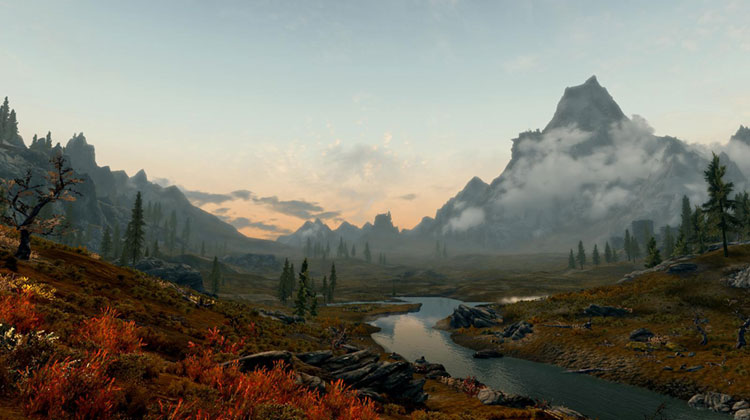
Open-world exploration has been a hallmark of the Elder Scrolls series, and with the increased level of detail in the fifth installment I was that much more eager to discover every corner of the map. After all, finding the perfect mountain peak is important for cabbage rolling. With more than 300 points of interest to uncover on the map and 9 topographically distinct areas, each with its own fauna and flora, exploring the northern landscapes and viking-inspired villages of Skyrim always felt fresh to me.
5. Shadow of the Colossus
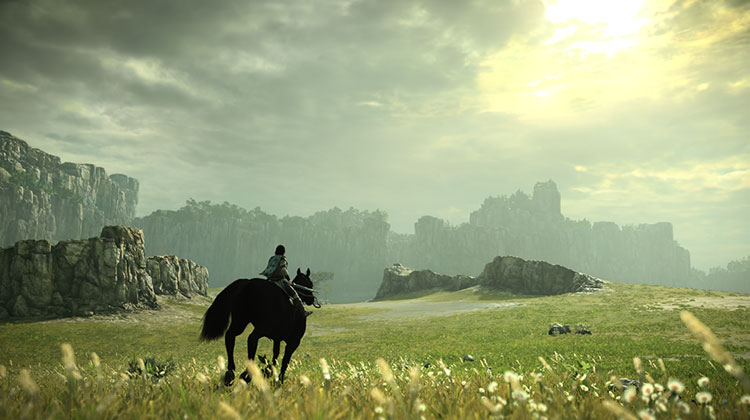
The objective of Shadow of the Colossus revolves around defeating 16 giant colossi for the purpose of resurrecting an innocent girl who was slain because she was believed to be cursed. However, finding those giant colossi requires traveling across an even more enormous land constituted of deep canyons, cascading waterfalls, vast deserts, and towering cliffs. Wandering this huge space, often on horseback, accounts for a significant portion of the game experience. Fitting then, that the protagonist's name is none other than Wander. Details in the environment like a gentle breeze through the prairie grasses or tiny wildflowers flecked throughout the landscape really add to the satisfaction of traversing the beautiful world, even if it's all just polygons.
4. Assassin's Creed series
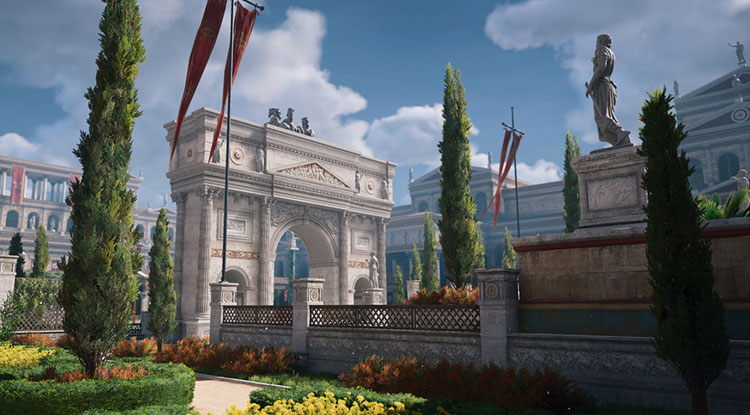
I've long been fascinated by the history of Ancient Rome. Its achievements in architecture and society were ahead of their time, the effects of which are still felt throughout the world. I was always amazed when watching history documentaries about Ancient Rome at just how beautiful the remnants of Roman civilization still are to this day, and often found myself trying to imagine how much more impressive they must have been in their own time. With the advent of the Assassin's Creed series, that imagination has become a lot easier as the game's artists have recreated Roman civilization in relatively faithful detail. It was no coincidence that my trip to Italy in 2011 was planned not long after playing Assassin's Creed II, and it did not disappoint. The ability to virtually tour these lost civilizations and then visit their ruins in person with a better understanding of what you're looking at is a wonderful privilege of this modern age.
3. The Legend of Zelda series
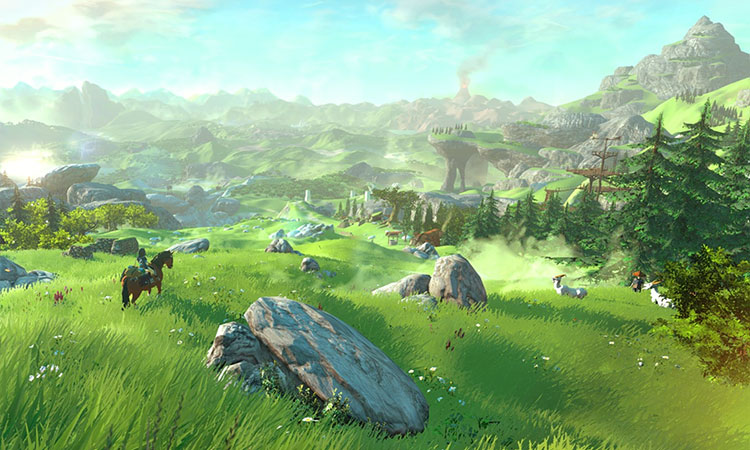
When Shigeru Miyamoto created the original Legend of Zelda in 1986, he drew inspiration from his experiences as a young boy exploring fields, forests, and caves as he traveled his hometown of Kyoto without a map. The resulting game was an attempt to recreate that childhood wonder and share with others the joy of discovery. This theme has remained central to the series' repeated success, and has culminated in a near-perfect game with The Legend of Zelda: Breath of the Wild. There's hours and hours of discoveries to be had in Hyrule's verdant open-world, and when the credits roll you may even find yourself wishing to continue the adventure in your own hometown.
2. Uncharted series

Uncharted is one of the most well-traveled and adventure-inspiring series I've had the pleasure of playing through. In his good old-fashioned quest for lost treasures, Nathan Drake travels to such seldom-featured real world locations as the Amazon, the jungles of Borneo, Tibetan high mountain villages, a city in Yemen, and the breathtaking landscapes of Madagascar. I'm particularly impressed by the lengths that developer Naughty Dog went to in order to represent these locations accurately, going so far as procuring real world photos and video for proper reference material.
One example that stands out in my mind was creating authentic sand dunes for Nate's crash-landing in the Rub' al Khali desert in Uncharted 3. A desert may be a relatively featureless environment, but sand is far from simple. Naughty Dog's dedicated visual effects team didn't stop short of visiting a desert to film each other rolling down sand dunes in order to have quality reference footage to recreate the intricate liquid-like properties of sand in a 3D world. The in-game result is one of the most beautiful moments in the game. I've been dying to do a desert trek ever since.
1. Final Fantasy series

Japan was the first country I chose to travel to, and I'd later make it my first home abroad. I was 21-years old when I originally visited in 2004 with the wish to see the place that made the games I was playing. This was in no small part due to Final Fantasy VII, a game that includes many Japanese cultural influences and even an in-game island nation heavily based on Japan. However, it was Final Fantasy XI that contributed to my broader daydreams of traveling the world. This was a game of such size that it could take one real life hour just to run from one end of the world to the other. It was a poor man's alternative to real life travels; expansive lands to explore, diverse nations and races, deep lore, and real people to meet.
The servers that hosted the game were open to all regions, meaning you could form a group of people from America, The United Kingdom, Germany, and Japan and cooperate to progress through the content. This created a strong community and social venue, and there were many times that I logged on not to play, but simply to chat. Even now, years after leaving the game, some of those people are still friends, and I've been making an effort to meet as many of them around the world as I can.


